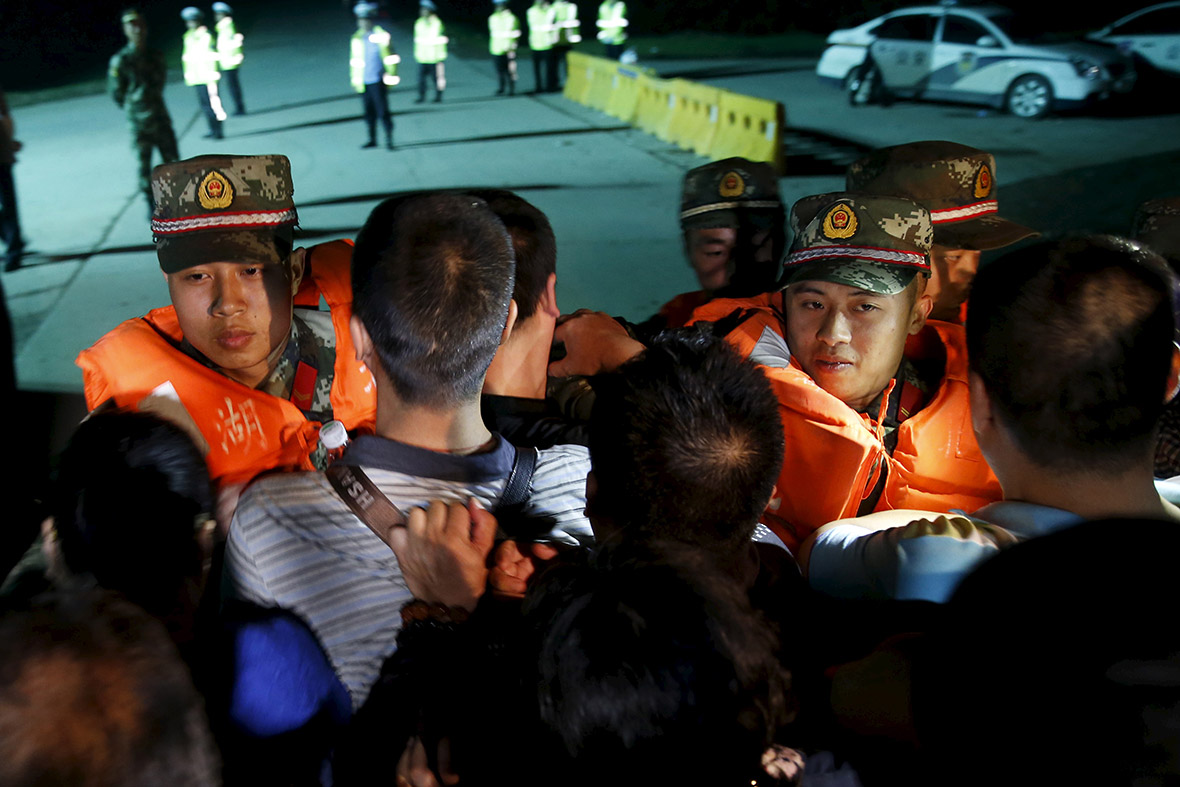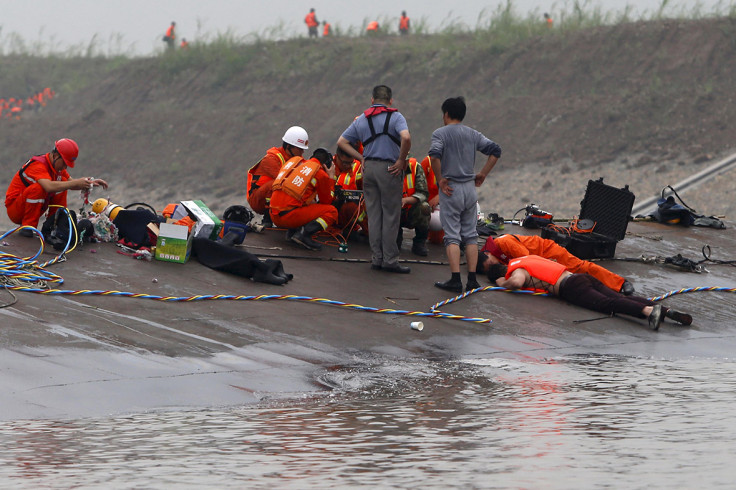China: Yangtze river boat disaster relatives demand answers as search goes on [Photo report]
The official death toll in the Yangtze River disaster has reached 65. More than 370 people remain missing and are feared dead.
Rescuers have cut holes into the overturned hull of the cruise ship in three places – near the bow, middle and stern – to search for additional survivors, but have found none so far. After checking each location, the workers are welding the removed sections of the hull back on and sealing them to maintain the ship's buoyancy and balance.

Divers are working in three shifts underwater to search the ship's cabins one by one. The lack of further survivors seems to show there is no more chance of finding anyone alive in the boat, although officials have not yet declared the search over.
On the nearby shore of the Yangtze River, relatives of some of the hundreds of victims still unaccounted for cried after being barred entry to the mortuary to seek information about their loved ones. Access to the site remains blocked by police and paramilitary troops stationed along the embankment, and the only information coming out is from the state-run media.





Bodies are being brought to the Rongcheng Crematorium in Jianli, where relatives of passengers are trying to identify loved ones.
Transport Ministry spokesman Xu Chengguang said divers would search the ship for as long as possible. "Until all hope is lost and more accurate information becomes available, we will not give up on our final efforts, although I know that our colleagues at the scene are facing a great many difficulties," Xu told reporters.





So far, at least 14 people are known to have survived the sudden capsizing in a severe storm, some by jumping from the ship during the early moments and swimming or drifting ashore. Three of them were pulled by divers from air pockets inside the overturned hull after rescuers heard yells for help coming from inside.
The 14 survivors are recovering in hospitals as search and rescue operations continue into the third day despite the inclement weather.
At the Jianli People's Hospital, five survivors are in intensive care. Zhu Hongmei, 65, one of the survivors, was rescued by divers on Tuesday afternoon (2 June). Her body temperature was less than 30 degrees Celsius as she was pulled out of the water, but after two days of treatment she is now out of danger and in stable condition.




The survivors included the ship's captain and chief engineer, both of whom have been taken into police custody. Some relatives have questioned whether the captain should have brought the ship ashore at the first signs of a storm, and whether everything possible was done to ensure the safety of the passengers after the accident. They have demanded help from officials in Nanjing and Shanghai in unruly scenes that have drawn a heavy police response.
Three years before the cruise ship he was steering capsized in the Yangtze River, the Chinese government honoured captain Zhang Shunwen for saving the life of an elderly man who had suffered an asthma attack.
Zhang is now the focus of attention after his ship sank during a fierce storm, in what may be China's worst maritime disaster in almost 70 years. The son of a former shipping captain, he has been a captain for more than a decade, said Zhao Chunyuan, a retired cargo ship captain who used to work with Zhang.
He has sailed the route between the southern Chongqing municipality to the city of Nanjing for seven or eight years, Zhao said.
Zhang was quoted as saying by Xinhua that the ship overturned "within one or two minutes". He was dragged out of the water near a pier. He could be found culpable if he had abandoned the ship, said James Hu, professor at the Shanghai Maritime University and an expert in maritime law, though there is no evidence he did.
"China has one rule that it's particularly strict on – the captain must be the last one to leave the ship," Hu said. "If the leader of the ship is not the last to leave the ship, it is a jailable offence."

Records from a maritime agency show the capsized ship was cited for safety violations two years ago. Authorities in Nanjing held the ship and five other Yangtze cruise vessels after it found them violating standards during a safety inspection campaign in 2013, according to a report on the city's Maritime Safety website. It didn't specify the Eastern Star's violations.
The shallow-draft boat, which was not designed to withstand as heavy winds as an ocean-going vessel can, overturned in what Chinese weather authorities have called a cyclone with winds up to 80mph (130kph). The sudden capsizing meant many passengers were unable to grab life jackets, Zhong Shoudao, president of the Chongqing Boat Design Institute, said.
An initial investigation found the ship was not overloaded and had enough life vests on board.
The owner of the ship that capsized has been ordered to suspend operations of a second boat and carry out safety probes on its entire fleet.
Chongqing Eastern Shipping is one of China's oldest pleasure cruise companies, struggling to compete with newcomers offering much fancier accommodations.


For decades, the sunken Eastern Star, the Eastern Pearl and other "three-star" cruise ships have made the 1,100 mile (1,800km) journey from Chongqing, perched high above the Yangtze, past the craggy, scenic Three Gorges and their gargantuan dam, to Nanjing, way down in the swampy lowlands.
Operators of the flat-bottomed, multi-decked ships charge their mostly older, Chinese passengers modest fares of 1,000 yuan (£105, €143, $160) and up for three- to five-day tours, most meals included. The boats ply a river that is often difficult to navigate and the industry as a whole struggles to find qualified staff, at least partly because of low salaries.
© Copyright IBTimes 2025. All rights reserved.




















